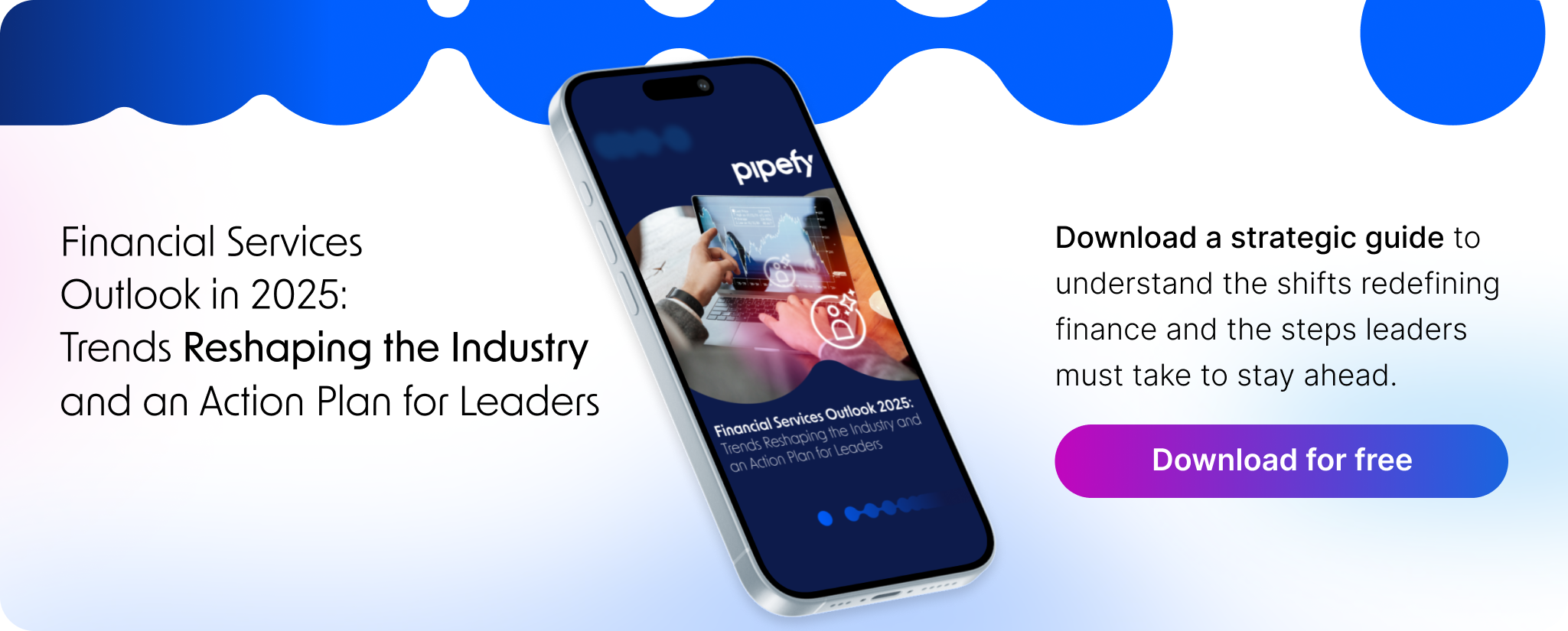
Digital transformation has become an increasingly important requirement for business success over the past 30 years. Companies must adapt to new technologies as they develop if they want to get ahead of the competition and stay there.
Customer expectations of a company’s digital capabilities are constantly growing, and the methods they use to evaluate success become ever sharper and more accurate.
A business’ key performance indicators (KPIs) must therefore adjust for dynamic factors such as technological innovation, market conditions, and company growth. As a result, the KPIs that businesses used in the past probably aren’t feasible for measuring the success of its digital journey.
This guide examines the most important digital transformation metrics for assessing a company’s digital transformation success.
Improve process efficiency with the Definitive Guide to Business Process Automation
Key digital transformation KPIs to track
The big day has finally arrived: brand-new software has been chosen, tested, and now implemented. Your business has set goals for its new efficiency capabilities. Now it’s time to establish and monitor KPIs to reach them.
Beyond aligning with the goals you’ve set, they should also take into account your business’ corporate and operational strategies.
The following 12 metrics are among the most common KPIs set by newly-transformed businesses looking for operational efficiency.
1. Employee productivity
New processes and technologies should ideally improve employee productivity, but they can also make employees less productive by making their jobs more complex. Don’t make the assumption that a digital transformation initiative will immediately increase productivity.
Establish a baseline for performance before implementing any new measures and, most importantly, decide what productivity means to your company. For example, the critical measure of productivity for one organization might be the time employees take to perform a certain task; for another, it could mean the number of tasks they complete within a certain time frame.
Bear in mind that most employees require a learning period to get the most out of a digital transformation. In many cases, productivity will plateau before reaching the company’s performance goals, which could indicate a need for additional training or other forms of support. Managers should be prepared to investigate the cause of disappointing performance when implementing any new technology.
Learn more: Employee Engagement Metrics: Guide to KPIs & How to Track Them
2. Adoption
Metrics on digital adoption provide information on how well employees are using these platforms and tools. Popular adoption metrics include the following:
- Adoption rate
- Time spent using a feature
- Active users
- Retention
Adoption rate is the ratio of users for a particular digital technology compared to the total number of users for that company. The time spent using a feature is usually expressed as the average amount of time each user spends on a feature. Active users is the number of users for a product or service during a certain time, typically daily or monthly. Retention is the probability that a first-time customer will become a repeat customer.
These metrics can determine how thoroughly a team has adopted a digital platform, technology or feature. Low values for adoption metrics mean the audience is not engaging with it, which could indicate a need to make changes. Additional training is often the key to accelerating a digital transformation.
3. Return on digital investments
Return on investment (ROI) is a highly popular KPI for measuring the success of any new initiative, whether or not it’s part of a digital transformation. Every business wants to recoup its investment in these purchases, which is why it’s important to compare the money spent on new technologies with the amount they bring in or save.
In addition to the direct costs, consider investments in training and new hires when calculating ROI. One of the most difficult parts of any new program for leadership is recognizing that the ROI takes time to accrue; it can seem quite small at first. The long-term benefits will be the most significant part of evaluating the success of a digital initiative.
4. Cost-benefit analysis
Organizations routinely perform a cost-benefit analysis before making any investment. This process compares the estimated costs and benefits of an investment for a variety of scenarios to determine the one that should provide the most favorable results.
For example, a business might perform a cost-benefit analysis for each component of a digital transformation to determine the one they should focus on. In this approach, the component with the fastest ROI would most likely be implemented first.
5. Customer experience
No matter the product or service, good customer experiences are crucial for any business that aims to create a loyal customer base. These metrics measure the customers’ engagement with a particular platform or product.
These measures of success have surpassed price and quality in recent years as consumers have made it clear that experience is their main priority.
- Customer Effort Score (CES): the amount of effort needed for a customer to complete a given task, which is typically measured through surveys,
- Customer Satisfaction (CSAT): a customer’s degree of satisfaction with a particular product or service, and
- Net Promoter Score (NPS): the probability that a customer will recommend a product or service to someone they know.
Customer conversion and engagement metrics also show how well customers connect with a company’s digital presence and marketing materials. These metrics can also look at valuable measurements like the number of scheduled demos, signups, subscriptions and website traffic sources.
6. AI-enabled businesses
Artificial intelligence (AI) technology has become an essential component in sustaining a business’s long term growth. Keep an eye on the business areas that AI plays a role in as your company continues its digital transformation.
The percentage of your business that uses AI should increase over time, but it does not need to reach 100% for your digital transformation to be a success – some business areas do not lend themselves well to AI technology.
7. Performance
Performance is one way of improving business efficiency, which is typically the reason for a digital transformation. The ability to change business models, processes and products through technology also supports a company’s growth and boosts its value for customers.
Performance metrics for a digital transformation can flag areas where processes can be simplified and more training can be helpful. They can also evaluate the processes running on a new application and its effect on resource investments.
The most common performance KPIs include:
- Mean Time to Failure (MTTF): the average time an asset functions before its first failure. This metric shows the system’s reliability with respect to non-repairable system failure,
- Mean Time to Resolve (MTTR): the average time needed to resolve the cause of failure, and
- Mean Time Before Failure (MTBF): the average time between two failures.
- Uptime: the percentage of time that an asset is functional.
8. Reliability and availability
A digital transformation must be reliable if it’s to build a strong reputation for its company. An online presence that’s often unavailable may indicate the need to improve aspects of the digital journey, especially when the company’s main service is a Platform-as-a-Service (PaaS) or Software-as-a-Service (SaaS).
Failures of internal assets like equipment and software can also impair productivity, making it difficult to support customers.
Popular KPIs for availability and reliability are the same as those used for performance, including the following:
- MTTF
- MTTR
- MTBF
- Uptime
9. Revenue from new digital services and technologies
Companies that introduce new digital technology need to know how much revenue these components are bringing in. This KPI is similar to ROI, except it’s specific to the return on digital investments.
The revenue from digital services is most commonly used as a KPI when implementing a digital method of making purchases, such as an online store or e-commerce sales. It could also be useful for measuring the ROI on recurring or subscription payments PaaS or SaaS solutions.
10. Cloud deployments
Migrating IT infrastructure to the cloud is currently the most common type of digital transformation. The increasingly digital operating environment of most companies means they’re becoming more dependent on the cloud for storage, which helps keep data accessible regardless of location.
Measuring the number and scope of cloud deployments helps determine how well an organization’s cloud storage is working and how easily employees can access data.
11. Active usage metrics
Active usage metrics identify daily problems with a digital platform, product or service. They also tell you how well users engage with digital technology.
Common active usage metrics include:
- Daily active users: the number of users who log on to the platform or software each day
- Conversion rate: the percentage of times that a task is started and completed. A high conversion rate can indicate that the digital transformation is successful.
- Abandon rate: the percentage of times a task is started, but not finished. A high abandon rate may mean that the digital transformation has room for improvement.
12. User lifetime value
User lifetime value is the value that a user provides for a company over the time that the user generates revenue for that company. Increasing customer retention therefore increases the revenue the company obtains from that customer.
Similarly, a platform that’s unavailable will reduce the lifetime value of its users, who won’t create revenue. Digitizing a business thus requires a company to evaluate the availability this transition will provide for its users, including customers and employees.
Complementary reading: A Guide to Successful Business Process Transformation
Why is it important to track digital transformation KPIs?
Success will elude any company transforming to digital operations that cannot measure its effects. Overlooking this fact can cripple an organization’s digitization effort before it begins. It happens more often than you might think. For example, a 2023 report shows that enterprises in this study failed to meet 59% of the KPIs for their digital projects during the past year.
However, an effective system for monitoring this initiative’s progress can identify its weak points, allowing the company to make corrections along the way. Those corrections may take time and experimentation, but they’re far preferable to starting over with a new system.
Establishing the precise metrics needed to accomplish this goal, then creating the means to measure them, often present challenges because each company’s digital transformation is unique. No unique set of metrics applies to all organizations.
New companies typically start up with digital systems in place, but established ones must often transition from legacy systems to cloud-based systems. In other cases, an organization may augment their existing digital capabilities by adding one component at a time.
Furthermore, digital transformations can occur across an entire organization at once or by department. This lack of consistency can create challenges when developing a digital transformation.
How to choose the right KPIs
Using too many KPIs to track digital transformation can be just as unproductive as not using enough, as it can create confusion and make progress difficult to measure. Avoid spreading team members too thin by attempting to improve too many things at the same time.
Restrict KPIs to a relatively small but customized set that provides the greatest benefit to your team. Your business won’t get optimal results by simply implementing a generic set of KPIs and hope for the best.
FInally, keep these best practices in mind when selecting KPIs for your business’ digital transformation:
- Keep the KPIs achievable by ensuring they’re easy to measure
- The KPIs should target a clearly defined audience that may not have IT expertise.
- The KPIs should provide a specific business benefit, which typically consists of achieving a desired outcome.
Bring digital transformation to your business with Pipefy
Pipefy’s no-code business process automation (BPA) solution is a convenient, user-friendly choice for businesses looking to make a digital transformation or streamline processes.
With built-in dashboards, tracking and analyzing KPIs is easy.
Start with any of our customizable templates or create your own from scratch. Visualize your KPIs with a few clicks, and extract, filter, and evaluate all your work data to improve your operations continuously.










